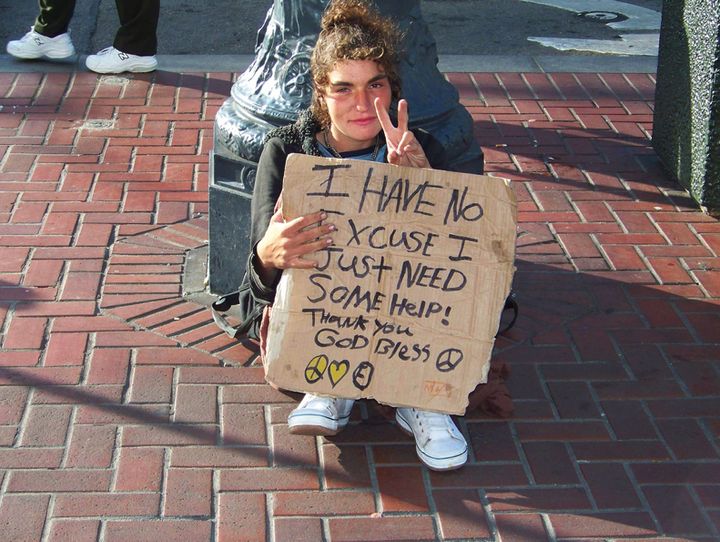
A startling 15% of our population or 47 million Americans, live below the poverty line. The so-called poverty threshold issued by the US Census Bureau is a salary of $24,257 per year or less for a 4-person household. Cooks, childcare workers, cashiers, maids, manicurists and retail sales workers are just a few examples of the many common jobs with annual mean wages below this threshold. Our neighbors in poverty are the working people we encounter every day who do not make enough to sustain a family. And the income-based poverty line is very fine. The US population living close to the poverty line is over twice as large at 33%, or >100 million out of the 325 million in the US. Among these, children and teens are disproportionately represented. The overall percentages of children under 18 years who live close to or below the poverty line are 44% and 21%, respectively. For teens between the ages of 12 and 17 specifically, 40% or 10 million live close to the poverty line.
Another federal measure of the poverty line include the poverty guidelines established by the Department of Health and Human services used for administrative purposes to determine eligibility for welfare programs, such as food stamps. The poverty guidelines differ from the poverty thresholds by calculating the impact of price changes using the Consumer Price Index. For a family of four the poverty guideline in 2016 was $24,300, very close to that set by the Census Bureau.
While the statistic of 15% of the population in poverty is a national average, certain demographic groups, in addition to age, are hit more than others. According to the Census Bureau, the highest national poverty rates were 27% for Native Americans, 26% for African Americans, and 24% for Hispanics. In the case of the 21% of children (under the age of 18), the poverty rate is tied to family composition, with the poverty rate in married-couple families being 11% as compared to 44% for female single parent families.
What does living in poverty look like and how does it affect teens? Poverty is having to choose between the most basic human needs, such as food versus medicine. It is 1 in 6 Americans going hungry on a daily basis. For children and teens, the statistic is 1 in 5, and among Native Americans, African-Americans and Latinos, it is 1 in 3. Deepening poverty has a wide range of negative societal effects as well. When people are unemployed and homeless, they may turn to theft in order to survive. Poverty-stricken children and teens often suffer negative outcomes, such as poor academic achievement, school dropout, abuse, behavioral and emotional problems, and developmental delays. Students from low-income families are 3 times more likely to experience anxiety and depression, and 7 times more likely to drop out of school. Less education and mental disorders prevent acquisition of good paying jobs, perpetuating the vicious cycle of lifelong handicaps that are then passed from generation to generation.
The major parties differ on their views of tackling poverty. The Democrats believe that poverty is caused mostly by factors beyond the control of the poor, including globalization that undercuts good jobs previously within the reach of the less educated, a racially and socio-economically segregated educational system, a lack of resources, and discrimination. To combat poverty, Democratic candidate Hillary Clinton proposes her “10-20-30” plan, which will direct 10% of federal investment to areas where 20% of the population has been living in poverty for >30 years. These monies, she states, will be directed towards creating affordable housing, child care access, paid leave, universal pre-K, equal pay for women and higher paying jobs. She also discusses a partnership between public and private sectors, not for profit, and faith based sectors. She advocates assistance and incentives to help people move from welfare to employment: “Successful reform would require large investment in education, subsidies for child care, transitional health care, tax incentives to encourage employers to hire welfare recipients, and tougher child support collection efforts.”
The Republicans emphasize personal responsibility, ascribing bad choices as the basis of poverty. They argue that government support with few strings attached (i.e. welfare) has made the poor’s choices worse. They state that it rarely lifts people out of poverty, and is the Democrats’ way of keeping people dependent so the government can redistribute income. Republican candidate Donald Trump maintains that welfare makes people dependent: “What I find so morally offensive about welfare dependency: it robs people of the chance to improve. Work gives every day a sense of purpose.” He proposes a poverty program that increases personal independence by making welfare a benefit rather than an entitlement, putting recipients on transition from dependence to independence: “Opportunity takes the place of a hand-out, where true self-esteem can grow from the satisfaction of a job well done.” The plan calls for the removal of “progressive” obstacles, such as overregulation of businesses, licensing requirements, and restrictions on providing public services in fields like transportation and sanitation. The only sustainable solution to poverty is the advance of political freedom and entrepreneurial capitalism that drives economic growth, according to the Republican platform.
The poverty issue in the US must be solved, and the two approaches, support of those in need combined with a support to the creation of new jobs, should be at the top of our priority list.
